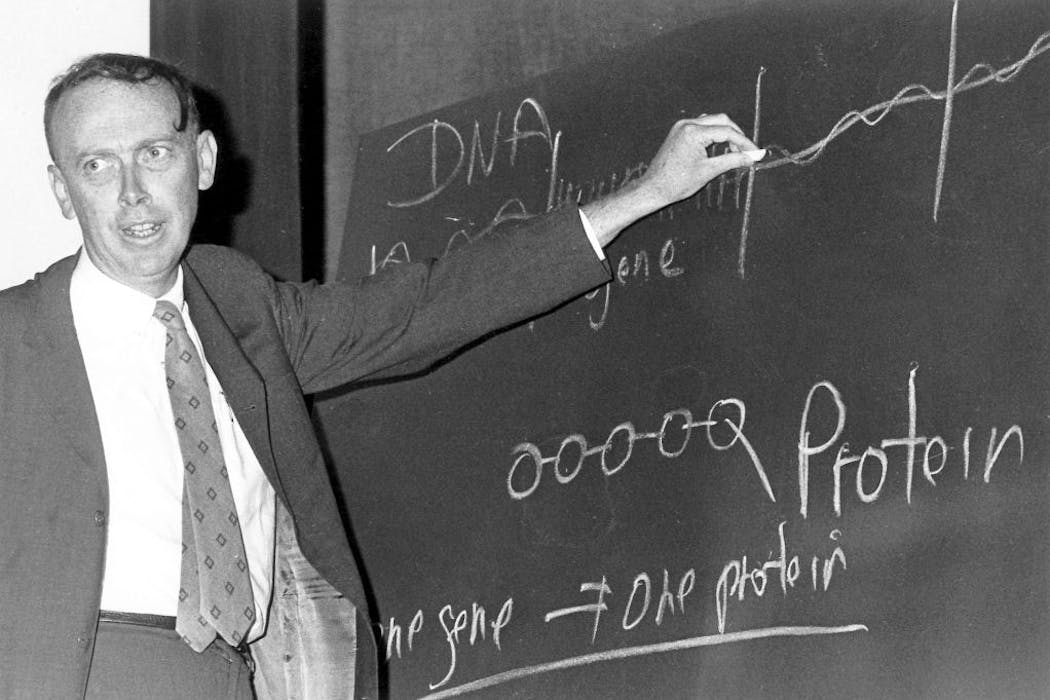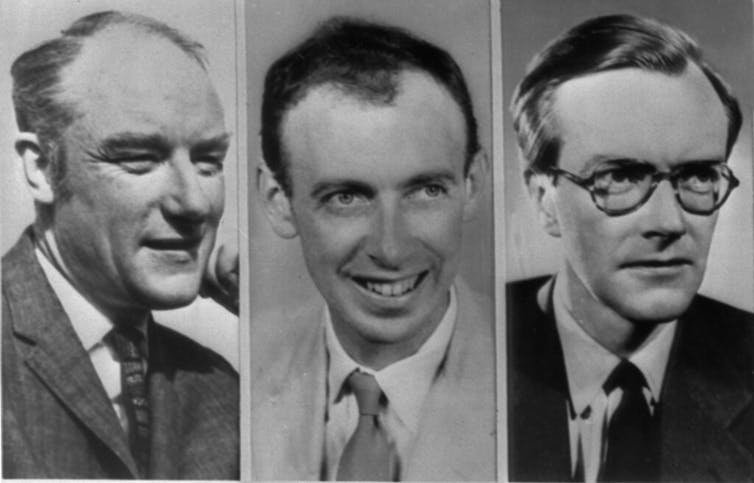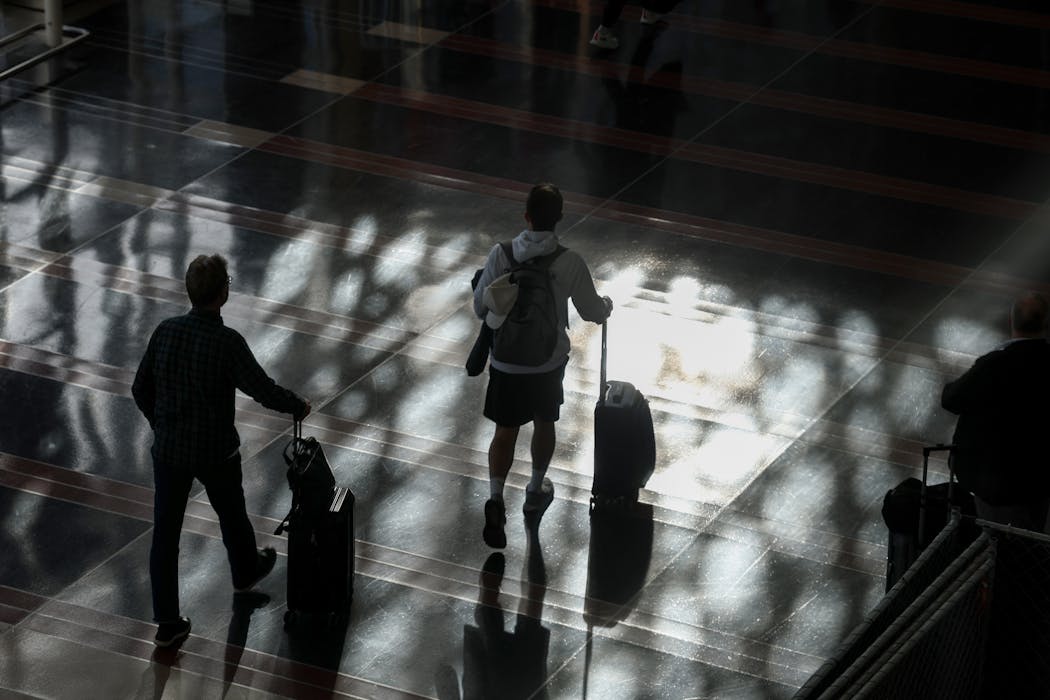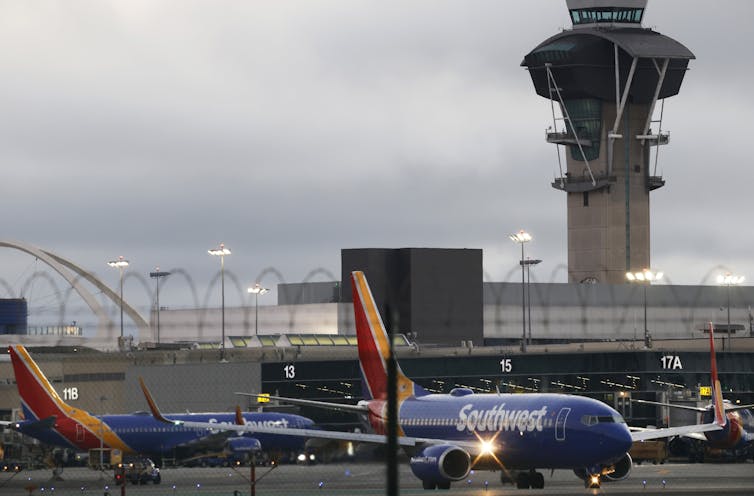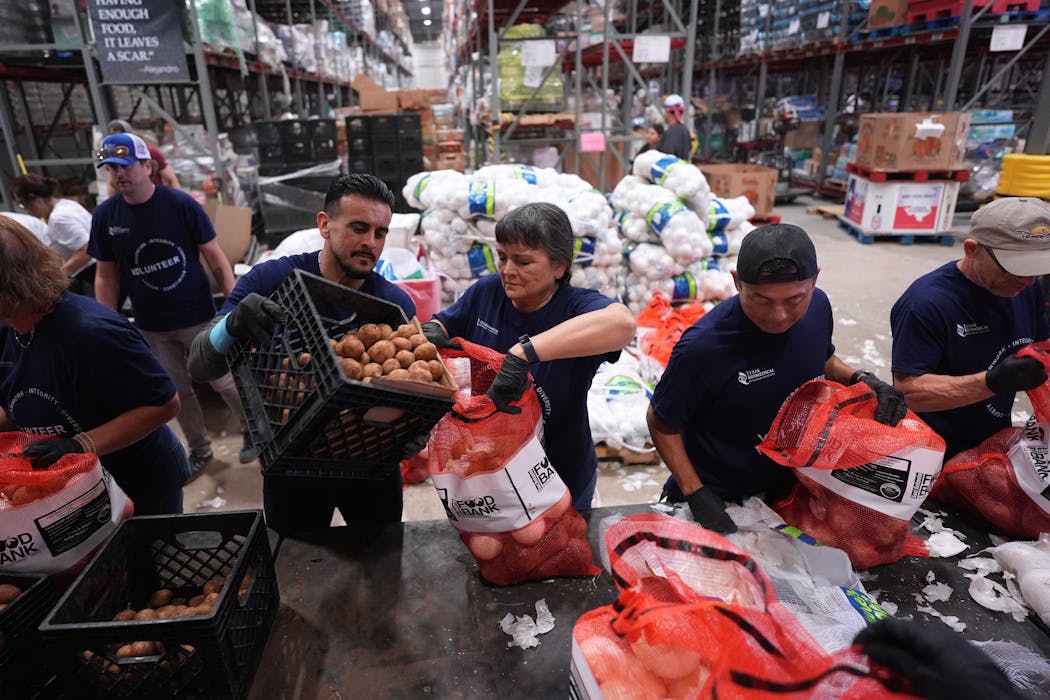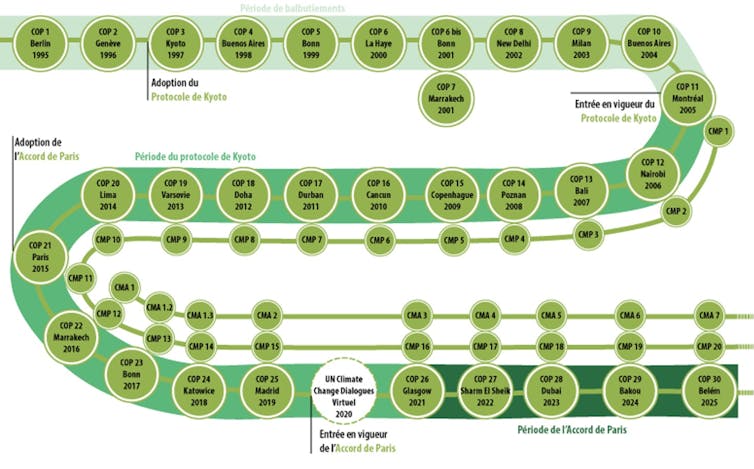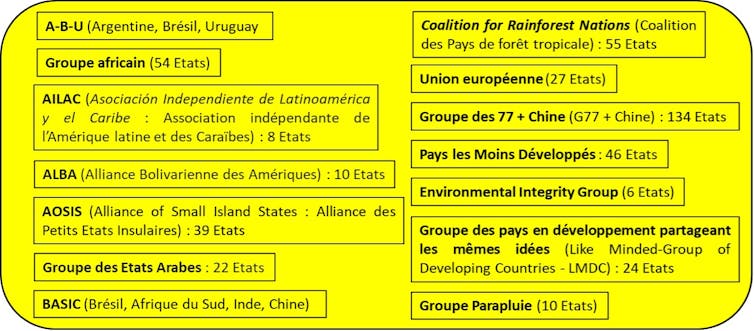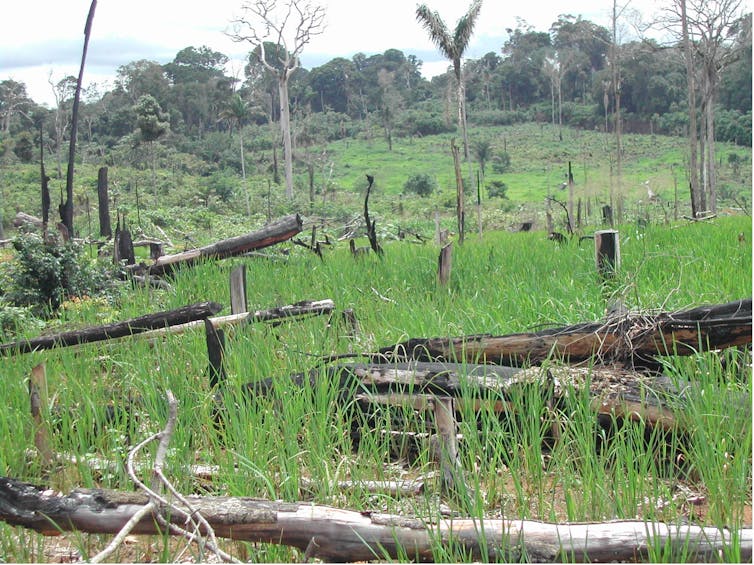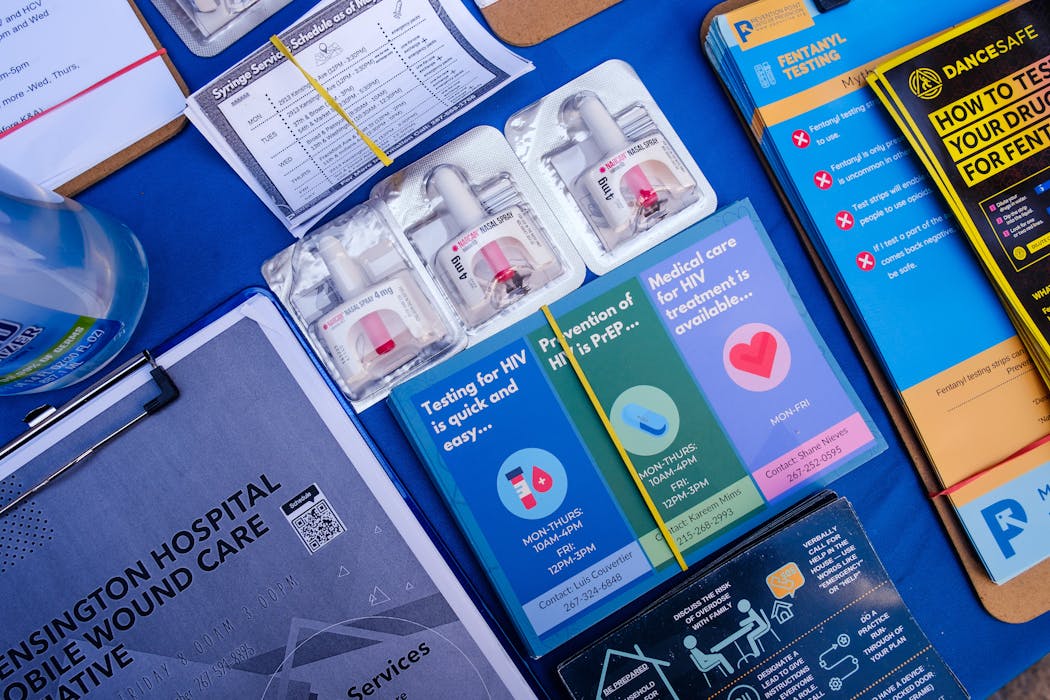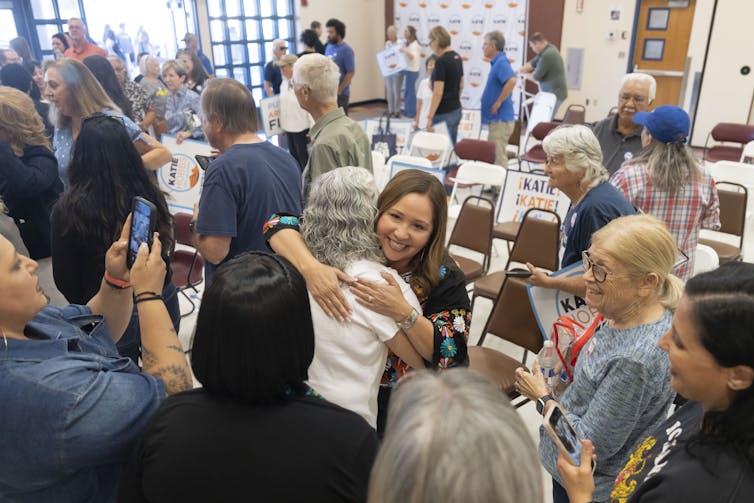Source: The Conversation – in French – By Dr Hayley Walker, Assistant Professor of International Negotiation, IÉSEG School of Management
Les COP attirent désormais des dizaines de milliers de participants. Une affluence qui pose de nombreux problèmes, et qui doit être réduite, à la fois pour que l’empreinte carbone d’un événement centré sur la lutte contre le réchauffement climatique ne soit pas démesurée et pour que les participants ne soient pas frustrés, ce qui ne peut qu’avoir un effet délétère sur leur participation ultérieure à le mise en œuvre des mesures adoptées durant les COP.
Les gouvernements du monde entier se réuniront bientôt à Belém au Brésil, pour la 30e Conférence des Parties (COP30), accompagnés de nombreux représentants du monde de l’industrie et des entreprises, de la société civile, d’instituts de recherche, d’organisations de jeunesse et de groupes de peuples autochtones – liste non exhaustive.
Depuis l’adoption de l’accord de Paris sur le changement climatique en 2015, le nombre de participants à la COP a explosé. La COP28 à Dubaï a réuni 83 884 participants, un record, et bien que ce nombre soit tombé à 54 148 lors de la COP29 à Bakou l’année dernière, il est resté bien supérieur à celui de la COP21 à Paris.
Les récentes « méga-COP » ont été critiquées pour leur énorme empreinte carbone. La recherche sur la participation des acteurs non étatiques aux COP que nous avons menée avec Lisanne Groen de l’Open Universiteit (Heerlen, Pays-Bas) identifie deux autres problèmes.
Premièrement, la quantité de participants nuit à la qualité de la participation, car un grand nombre d’acteurs non étatiques sont contraints de se disputer un nombre limité de salles de réunion, de créneaux horaires pour l’organisation d’événements parallèles, d’occasions de s’exprimer publiquement et de chances d’entrer en dialogue avec les décideurs. Deuxièmement, la tendance aux « méga-COP » creuse un fossé entre, d’une part, les attentes de ces acteurs en termes d’impact qu’ils espèrent avoir sur le déroulement des événements et, d’autre part, la réalité des faits.
Réduire le nombre de participants d’une façon équitable
En ce qui concerne le premier problème, la solution évidente consiste à réduire la taille des COP, mais cela n’est pas si facile dans la pratique. La décision d’organiser la COP30 dans la ville amazonienne de Belém, difficile d’accès et ne disposant que de 18 000 lits d’hôtel, a été considérée comme une tentative de dépasser ce qu’on a appelé le « pic COP »
Des dizaines de milliers de participants, qui ne semblent pas découragés par l’éloignement du lieu, sont tout de même attendus, mais l’offre limitée de lits a provoqué une flambée des prix, ce qui soulève des inquiétudes quant aux coûts et à leur effet potentiel sur « la légitimité et la qualité des négociations », comme le rapporte Reuters.
À mesure que les COP ont pris de l’ampleur, elles ont suscité de plus en plus d’attention de la part des milieux politiques et des médias, au point d’être désormais considérées comme « un événement où il faut absolument être présent ». Cela incite les organisations non gouvernementales et d’autres acteurs non étatiques à y participer. Tout comme la force gravitationnelle des grands corps massifs attire d’autres objets vers eux, la masse des « méga-COP » attire un nombre croissant de participants, en un cycle qui ne cesse de se renforcer et devient difficile à briser.
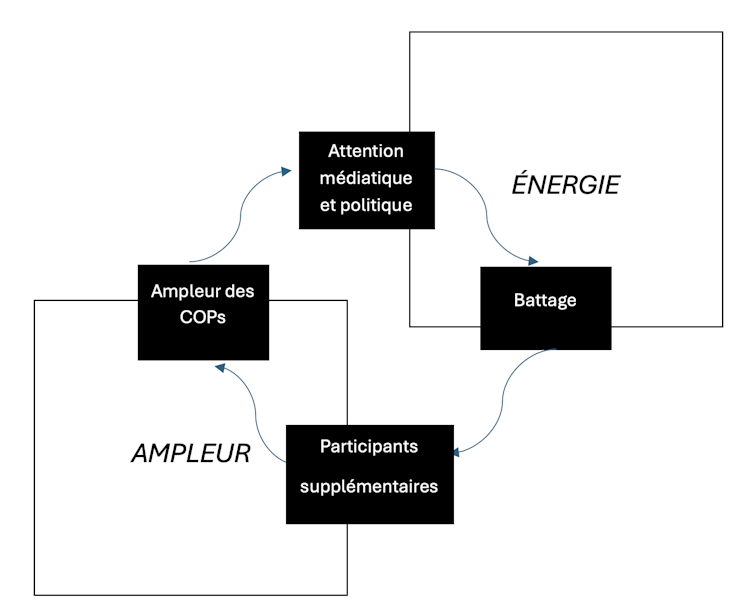
Hayley Walker, Fourni par l’auteur
Selon nous, la manière la plus équitable de réduire la taille des COP consisterait à mettre en lumière la catégorie peu connue des participants « excédentaires ». Cette catégorie permettait autrefois aux gouvernements d’ajouter des délégués aux événements sans que leurs noms n’apparaissent sur les listes de participants, mais leurs noms sont désormais rendus publics depuis l’introduction de nouvelles mesures de transparence en 2023. Lors de la COP28, il y avait 23 740 participants « excédentaires ». Il ne s’agit pas de négociateurs gouvernementaux, mais souvent de chercheurs ou de représentants de l’industrie qui entretiennent des liens étroits avec les gouvernements.
Les COP sont des processus intergouvernementaux : elles sont créées par les gouvernements, pour les gouvernements. Par conséquent, la priorité est donnée aux demandes d’accréditation émanant des gouvernements.
Ce n’est qu’une fois toutes les demandes gouvernementales satisfaites que les accréditations restantes peuvent être attribuées à des acteurs non étatiques admis, appelés « observateurs ».
Les participants excédentaires bénéficient d’accréditations au détriment de ces organisations observatrices. Faire pression sur les gouvernements pour qu’ils limitent ou suppriment la catégorie des participants excédentaires permettrait donc de libérer beaucoup plus de badges pour les observateurs tout en réduisant le nombre total de participants à la COP de manière plus équitable.
L’écart entre les attentes des participants et la réalité des COP
Le deuxième problème, celui de l’écart entre les attentes des acteurs et ce qui se passe concrètement durant les COP, est lié à une conception de plus en plus erronée du rôle des acteurs non étatiques dans le processus de négociation des politiques climatiques.
Les États souverains sont les seuls acteurs légitimes pour négocier et adopter le droit international. Le rôle des acteurs non étatiques est d’informer et de mener des actions de plaidoyers, mais pas de négocier. Pourtant, ces dernières années, certains groupes d’acteurs non étatiques ont multiplié les appels pour obtenir « une place à la table des négociations » dans l’espoir de pouvoir participer aux réunions sur un pied d’égalité avec les gouvernements.
Ce discours, largement amplifié sur les réseaux sociaux, conduit inévitablement à la frustration et à la déception lorsque ces acteurs sont confrontés à la réalité des négociations intergouvernementales.
Nous constatons ce décalage en particulier chez les acteurs non étatiques qui sont nouveaux dans le processus. Les « méga-COP » attirent de plus en plus de nouveaux participants, qui ne disposent peut-être pas des ressources, notamment du savoir-faire et des contacts, nécessaires pour atteindre efficacement les décideurs politiques. La désillusion croissante de ces participants sape la légitimité des COP ; or cette légitimité est un atout précieux dans un contexte géopolitique où elles sont confrontées aux défis posés par l’administration Trump, mais risque également de gaspiller les idées et l’enthousiasme précieux apportés par les nouveaux venus.
Se concentrer sur la mise en œuvre des décisions
Nous voyons deux solutions. Premièrement, les initiatives visant à renforcer les capacités peuvent sensibiliser à la nature intergouvernementale des négociations et aider les nouveaux participants à s’engager efficacement. L’un de ces outils est le « Guide de l’observateur » de la Convention-cadre des Nations unies sur les changements climatiques (CCNUCC). De nombreuses organisations et personnes produisent leurs propres ressources pour aider les nouveaux participants à comprendre le fonctionnement du processus et la manière de s’impliquer. Deuxièmement, et de manière plus fondamentale, il convient de détourner l’attention des responsables politiques, des médias et du public des négociations en tant que telles pour la diriger vers le travail essentiel de mise en œuvre des politiques climatiques.
Les COP sont bien plus que de simples négociations : elles constituent également un forum qui rassemble les nombreux acteurs qui mettent en œuvre des mesures climatiques sur le terrain afin qu’ils puissent apprendre les uns des autres et créer une dynamique. Ces activités, qui se déroulent dans une zone dédiée de la COP appelée « Programme d’action », revêtent une importance capitale maintenant que les négociations sur l’accord de Paris ont abouti et qu’un nouveau chapitre axé sur la mise en œuvre s’ouvre. Si le rôle des acteurs non étatiques dans les négociations intergouvernementales est plutôt limité, il est en revanche central lorsqu’il s’agit de la mise en œuvre des mesures décidées lors des COP. Les actions des villes, des régions, des entreprises, des groupes de la société civile et d’autres acteurs non étatiques peuvent contribuer à combler l’écart entre les objectifs de réduction des émissions fixés par les gouvernements et les réductions qui seront nécessaires pour atteindre les objectifs de l’Accord de Paris.
La question clé est donc de concentrer l’énergie et l’attention des acteurs sur le programme d’action et la mise en œuvre des politiques, de façon à leur donner suffisamment d’importance pour qu’ils exercent leur propre force d’attraction et déclenchent une dynamique positive en faveur de l’action climatique. Il est encourageant de voir la présidence brésilienne qualifier la COP30 de « COP de la mise en œuvre » et appeler à un « Mutirão », un sentiment collectif d’engagement et d’action sur le terrain qui ne nécessite pas une présence physique à Belém. Cela permet à la fois de résoudre les problèmes liés aux « méga-COP » et de canaliser l’énergie collective vers les domaines qui en ont le plus besoin.
![]()
Dr Hayley Walker ne travaille pas, ne conseille pas, ne possède pas de parts, ne reçoit pas de fonds d’une organisation qui pourrait tirer profit de cet article, et n’a déclaré aucune autre affiliation que son organisme de recherche.
– ref. Le problème des « méga-COP » : une conférence de 50 000 personnes peut-elle encore lutter contre le changement climatique ? – https://theconversation.com/le-probleme-des-mega-cop-une-conference-de-50-000-personnes-peut-elle-encore-lutter-contre-le-changement-climatique-269206

